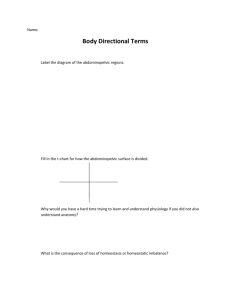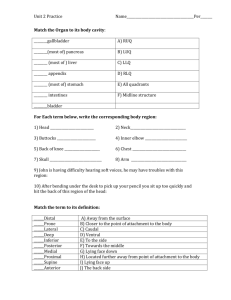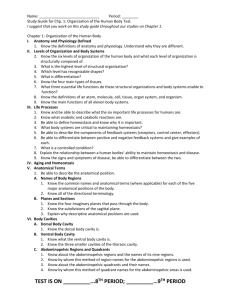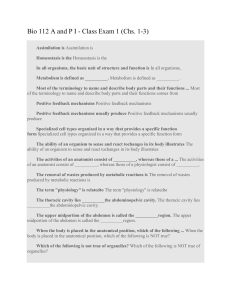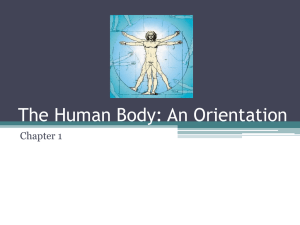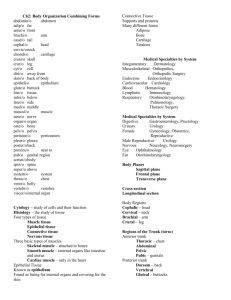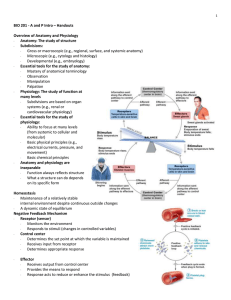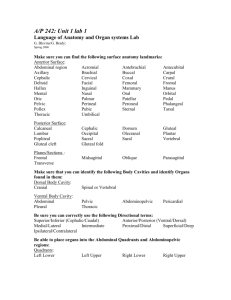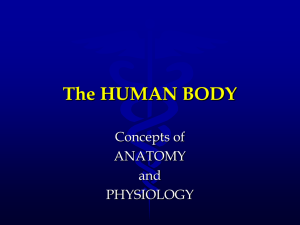Study Sheet 1 – Review Terms Study Sheet 2 – Terminology Quiz
advertisement
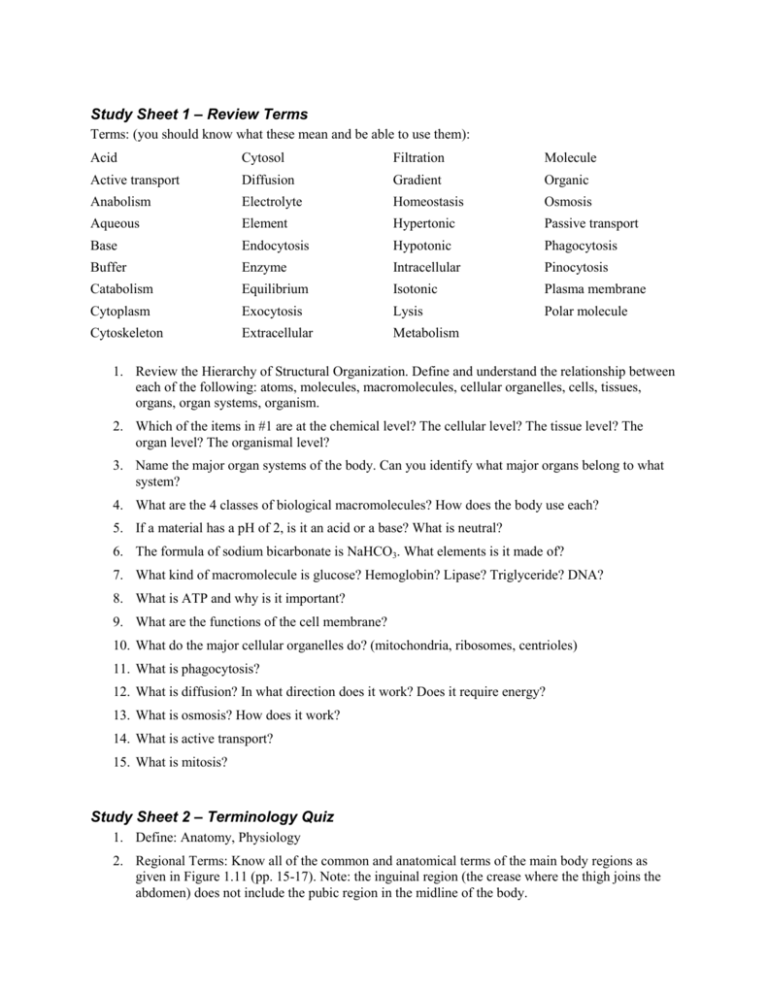
Study Sheet 1 – Review Terms Terms: (you should know what these mean and be able to use them): Acid Cytosol Filtration Molecule Active transport Diffusion Gradient Organic Anabolism Electrolyte Homeostasis Osmosis Aqueous Element Hypertonic Passive transport Base Endocytosis Hypotonic Phagocytosis Buffer Enzyme Intracellular Pinocytosis Catabolism Equilibrium Isotonic Plasma membrane Cytoplasm Exocytosis Lysis Polar molecule Cytoskeleton Extracellular Metabolism 1. Review the Hierarchy of Structural Organization. Define and understand the relationship between each of the following: atoms, molecules, macromolecules, cellular organelles, cells, tissues, organs, organ systems, organism. 2. Which of the items in #1 are at the chemical level? The cellular level? The tissue level? The organ level? The organismal level? 3. Name the major organ systems of the body. Can you identify what major organs belong to what system? 4. What are the 4 classes of biological macromolecules? How does the body use each? 5. If a material has a pH of 2, is it an acid or a base? What is neutral? 6. The formula of sodium bicarbonate is NaHCO3. What elements is it made of? 7. What kind of macromolecule is glucose? Hemoglobin? Lipase? Triglyceride? DNA? 8. What is ATP and why is it important? 9. What are the functions of the cell membrane? 10. What do the major cellular organelles do? (mitochondria, ribosomes, centrioles) 11. What is phagocytosis? 12. What is diffusion? In what direction does it work? Does it require energy? 13. What is osmosis? How does it work? 14. What is active transport? 15. What is mitosis? Study Sheet 2 – Terminology Quiz 1. Define: Anatomy, Physiology 2. Regional Terms: Know all of the common and anatomical terms of the main body regions as given in Figure 1.11 (pp. 15-17). Note: the inguinal region (the crease where the thigh joins the abdomen) does not include the pubic region in the midline of the body. 3. Orientation and Directional Terms: Know and be able to give examples of all the directional terms (terms of relative position) in your text (Table 1.1 on page 14, including the footnote contrasting the use of these terms in four-legged animals and humans.) What is anatomical position? 4. Body Planes and Sections (pp. 17-18 and Figures 1.13 and 1.14): Be able to define all of the section terms listed in this section. 5. Body Cavities and Membranes (pp. 18-20, Figures 1.15-1.17): Know all the boldface terms in this section. Know the names and describe the locations of the serous membranes and fluids of the ventral body cavity. 6. Abdominal Quadrants (p. 16 and Figure 1.12): Know the names and boundaries of the four quadrants of the abdominopelvic cavity. (You do NOT need to know the names of the nine abdominal regions.) 7. Be sure to know the synonyms of terms, where given. Make note of any questions you have, and get them answered well before the test date. Some Chapter 1 review questions that may be helpful are on pages 20-23. Use the diskette that comes with the textbook to take practice quizzes. You can also go online and practice at http://www.msjensen.gen.umn.edu/webanatomy/ Test questions may be fill-in-the-blank. Spelling counts. Some sample test questions are below. Sample Terminology Quiz Questions 1. What is the hollow area behind the knee called? 2. The heart is ______________ to the diaphragm a. Medial b. Dorsal c. Deep d. Superior e. Proximal 3. Name the plane that divides the human body into superior and inferior portions. 4. In what cavity does the right lung lie? Be as specific as possible. 5. In which abdominopelvic quadrant does the appendix lie?
